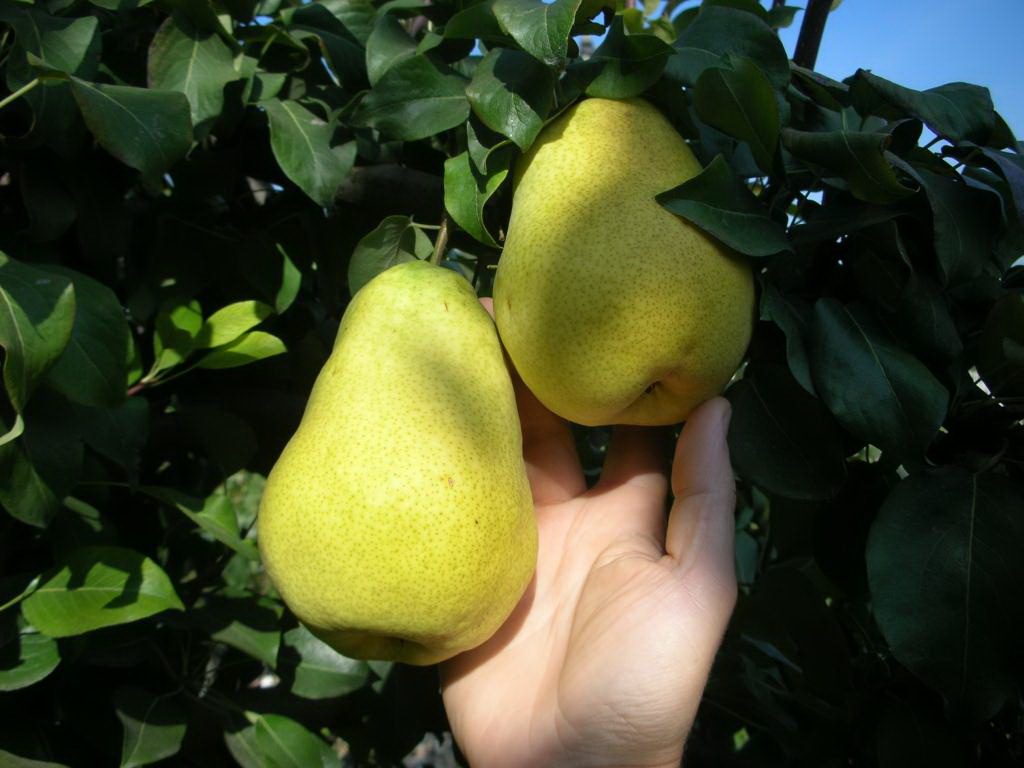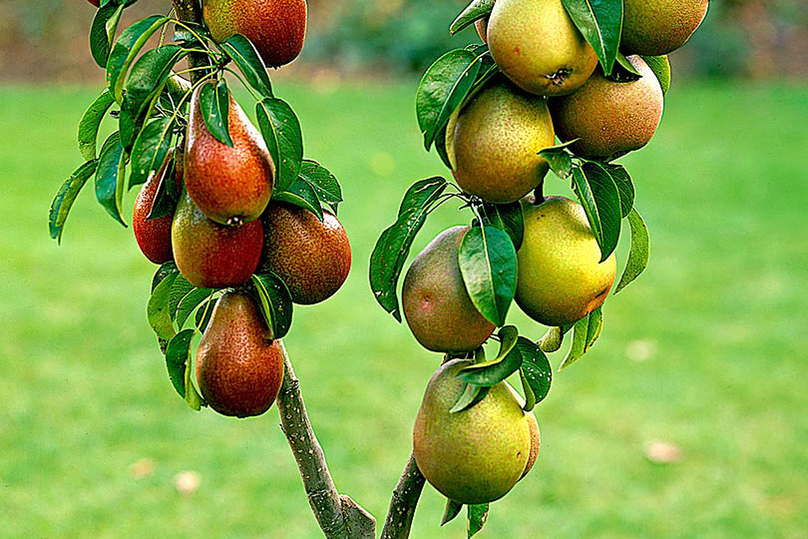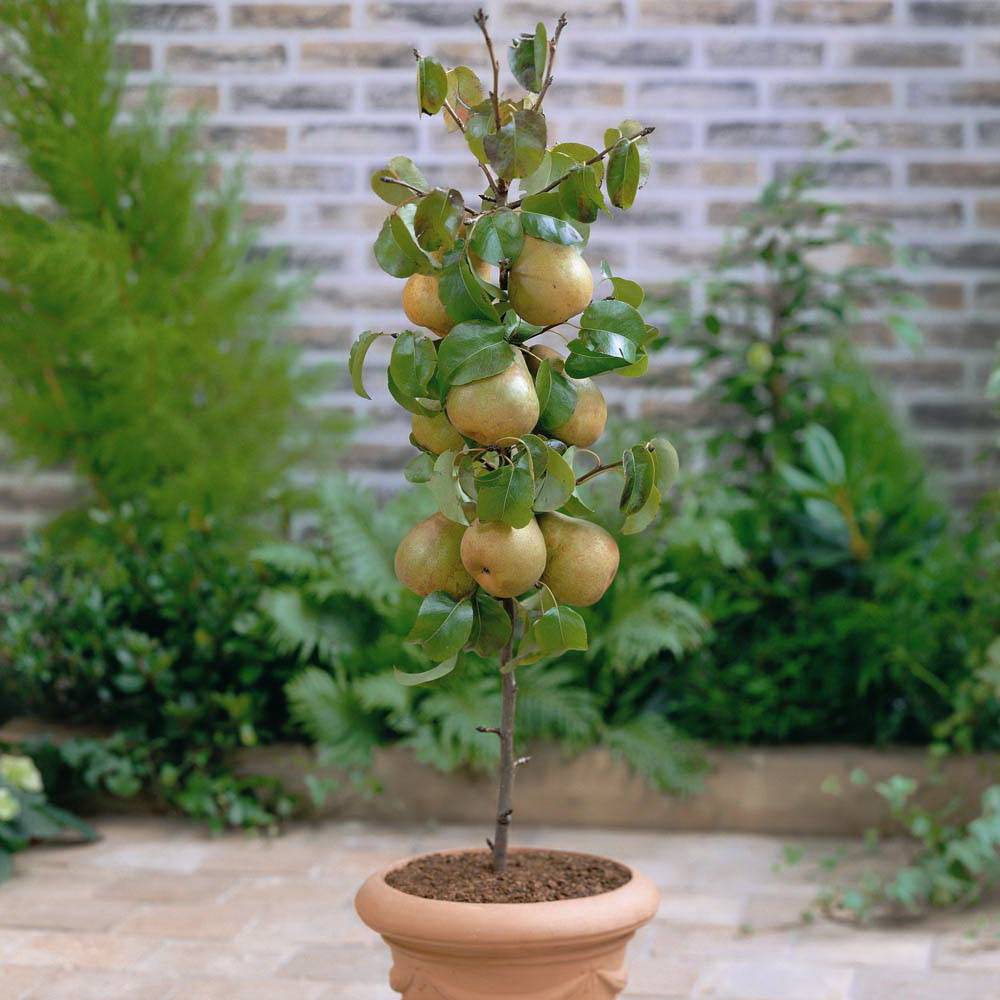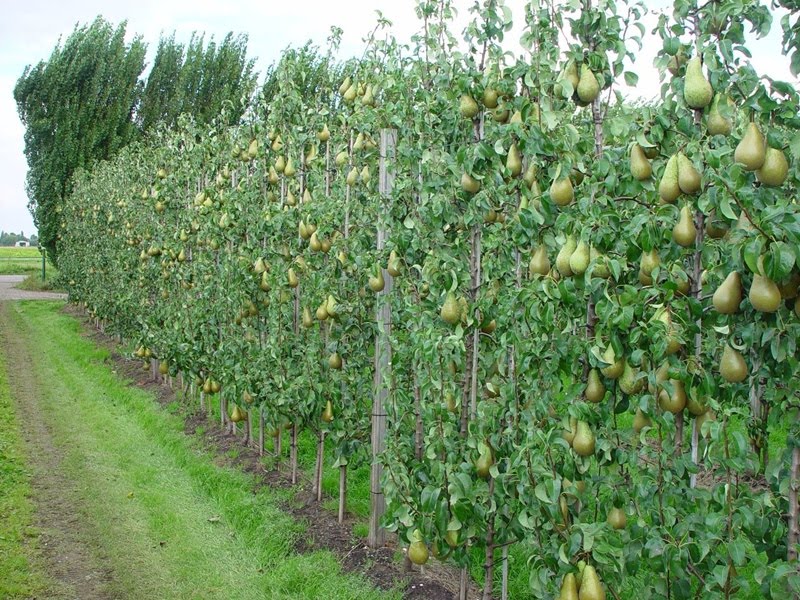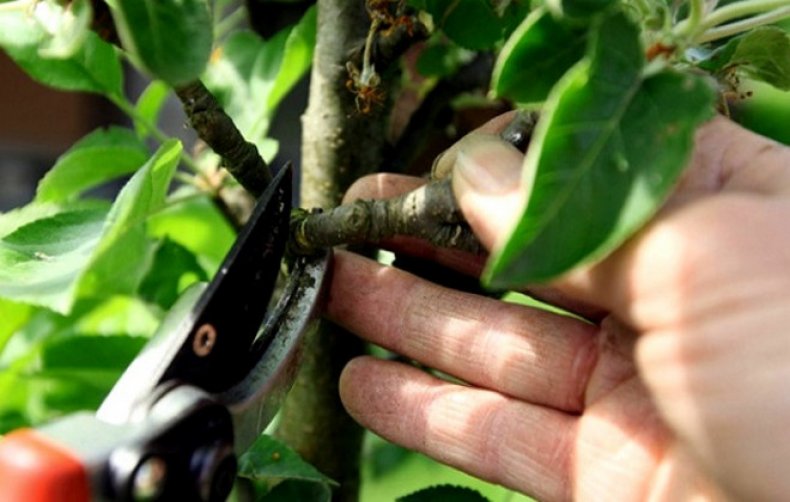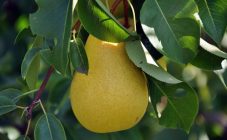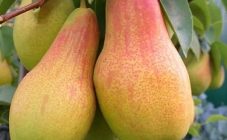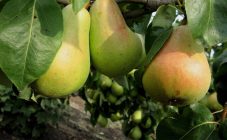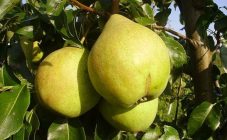Content:
The dream of any summer resident is to grow an orchard on their site. However, what if the size of the site is limited? Columnar trees will come to the rescue.
Description
The famous breeder M.V. In 1998, Kachalkin created an experimental nursery in the Tula Region and began working on breeding varieties of columnar apple trees. The appearance of the columnar pear is his merit. Characteristic features of the culture:
- compact dimensions;
- yield.
Columnar pears are divided into:
- vaccinated;
- natural (seed).
Ideal for grafting quince. Sometimes they experiment with irga. Competent care guarantees pear blossoming in the second year after planting or grafting.
Compared to ordinary fruit trees, the trunk is larger. Branches with fruits are located along the length of the entire trunk. Removing unnecessary branches is not difficult.
Fruit crops grow in regions with different climates. Competent care of plantings determines the success of cultivation, especially the stage of fruiting.
By the timing of fruit ripening, columnar pears are divided into:
- early;
- late.
The name of individual fruit trees contains the letter "G", for example, G-5 or G-333, which means "pear". Experienced gardeners recommend choosing varieties with such a label.
Popular varieties
Let's single out the columnar pears for the Moscow region, these include the following.
Sapphire
Sapphire pear gives its first harvest after 3 years. Fruits are harvested in September. The fruit is distinguished by its oblong shape and green-pink color. A pear weighs an average of 250 g. Fruits do not like frost, they are not stored in the basement. The description of the columnar pear variety Sapphire emphasizes the advantages of the culture:
- cold resistance;
- shelf life;
- the sweetness of the fruit.
The autumn variety is popular in summer cottages near Moscow and in neighboring regions.
Decor
In the ranking of the best varieties of columnar pears, it occupies a leading position.
The fruiting of the plant falls at the end of the summer season and the beginning of autumn. Decora pear will delight with the first fruits in the 2nd year after planting. Fruit color is yellow, oval shape. The pulp is sweet, juicy, devoid of astringency. It is included in the children's diet.
Benefits:
- self-pollinated;
- frost-resistant;
- unpretentious to the soil;
- resistant to sporiasis and moniliosis.
Minus - short storage time.
Knight Werth
Autumn grade. The first fruits appear 2 years after planting. Knight pears have a pink tone. The tender pulp melts in the mouth. Both children and adults enjoy fruits. Vert's weight reaches 250 g. The variety can withstand frosts down to -25 ° С. Fruits are eaten fresh, they are suitable for making preserves, confiture, jam.
Advantages:
- fragrant pulp;
- frost resistance;
- yield - up to 7 kg;
- large fruits.
Pavlovskaya
Fruiting occurs in the second year, in October. Large fruits have excellent taste, sweet flesh. The ripe fruits of Pavlovskaya pear do not fall from the tree for a long time. The skin is oily, thin, with a yellow-pink tint.
Pros:
- fruit dimensions;
- originality of taste;
- immunity to phyto-diseases;
- use in garden decor.
Honey
Fruits ripen in summer, in the second decade of August. Belongs to the best varieties of columnar pears for the Moscow region. Large fruits have a yellow-green color. Fruit weight - up to 400 g. Juicy pears have a delicate aroma and sweet taste. Features Mfood grade:
- drought resistance;
- undemanding to the ground;
- yield (up to 80 kg);
- rapid loss of taste and marketability - stored for 2 months.
Carmen
Dessert variety of Russian selection. Obtained by crossing Blankovskaya daughter and Williams. The fruits have a red-burgundy color and a sour-sweet taste. They ripen in July-August. Stored until October. The mass of 1 pear is 180 g.
pros Carmen:
- immunity to scab;
- unpretentious landing.
Minuses:
- low cold resistance;
- low yield - up to 3 kg.
They are used in landscape design because of their catchy appearance.
Bogatyr
Late grade. Fruiting falls at the end of August and lasts until October. Fruit weight reaches 300 g. Green fruits have a yellow barrel and a classic shape. The snow-white pulp is sweet and juicy with a honey flavor.
Bogatyr's advantages:
- high yield - up to 8 kg;
- long shelf life and preservation of the presentation;
- winter hardiness - withstands frosts down to -35 ° C.
Delight
Belongs to a partially self-fertile crop that is cross-pollinated. To increase yields, planting next to pollinators is just right, for example, with a conference.
Juicy fragrant fruits with honey flavor, weigh up to 160 g. Harvested when ripe or ahead of time. Delight pears are made from:
- compotes and canned food;
- desserts and jams.
Pros of the variety:
- cold resistance;
- stable fruiting;
- the universality of the purpose of the fruit.
Minuses:
- deterioration of the taste of overripe pears and a reduction in shelf life;
- does not tolerate drought.
Advantages and disadvantages of a columnar pear
Benefits:
- Small footprint: Compact crops require little space, even on a small backyard.
- Plant survival.
- Early maturity. Fruits are harvested in the second year after planting, no need to wait for 5 years.
- Diversity. Gardeners can choose a variety that is suitable for a particular region.
- Transportability.
- Ease of harvesting fruits. It is easy to reach the crown without leaving the fruits for feeding the birds.
- Unpretentiousness to the ground.
- Disease resistance.
- Large-fruited.
- High yield.
- Cooking applications.
Disadvantages:
- short life span and limited fruiting time - up to 10 years;
- attentive attitude to care, especially feeding;
- crown formation;
- periodic pruning.
Growing and care
Landing
The columnar pear is picky about the landing site. The main requirement is protection from drafts and wind, strong gusts can break a young tree.
Grown on any soil, even limestone. Wood ash is introduced. Avoid the close occurrence of groundwater.
Landing time is spring, autumn. They give preference to spring planting - the pear will have time to take root reliably.
Prepare the soil before planting. Dig a hole 50 cm wide and 70 cm deep. Pour a bucket of water. After absorbing the liquid, add a mixture of humus, peat, sand. You can mix the river. It is important that the train does not occupy more than half of the landing pit. Do not forget to add potassium sulfate and superphosphate (50-75 g each). The plant is placed and covered with earth. The tree is rammed. Water the soil intensively.
Disembarkation scheme:
- the distance between the columnar pears is 50 cm;
- the interval between rows is 1-1.5 m.
The peculiarities of caring for columnar trees require material as well as time costs.However, after 2 or 3 years, all expenses will pay off with a good harvest.
Watering
You will need to regularly water the seedlings in the first year. Watering is carried out at least twice a week in cool weather, always before noon. In drought, watering is carried out daily. From 5 to 8 liters of water are applied under one plant. Before the operation, the soil moisture is assessed. Both drying out and waterlogging of the soil threaten the health of the columnar pear.
In order to properly water the tree, make a depression in the trunk circle and pour in liquid.
Fertilizer
The full development and fruiting of varieties of columnar pears is provided by periodic spraying and feeding. They also help fight pathogenic microorganisms and harmful insects. Iron or copper sulfate is used.
Top dressing is applied three times during the spring-summer period:
- The formation of the first leaves on the pear is a signal to feed the pears. Fertilized with urea. For 1 tree, 2 liters of water and 10 g of urea are used.
- They are fed a second time after 14 days.
- Fertilizer is applied for the third time a month after the last feeding.
When growing dwarf crops, organic matter is introduced: liquid bird droppings or mullein in a ratio of 1:10. Gardeners mix saltpeter into the feeding: 5 g per 10 liters of water.
Mulching and loosening
Systematically loosen the ground around the trees. This manipulation is carried out carefully because of fear of harming the roots of a young pear. Weeds are promptly removed from the trunk circle. To protect the columnar pear from weeds and retain moisture, the crop is mulched with rotted sawdust or straw.
Pruning
It is valuable for summer residents to navigate the rules for pruning a columnar pear:
- Some specimens of columnar varieties bloom in the first year. It is necessary to pluck all the flowers - the tree will direct its efforts towards rooting.
- When flowers appear next year, leave 2 flowers.
- For growth and fruiting, the pear is pruned. In the plantation, the branches are shortened, leaving at most 2 buds.
- Frequent pruning of shoots is not appropriate - it provides rapid growth of branches.
- In early spring, before sap flow, the lateral shoots are cut off, leaving two buds each.
- If the apical bud is damaged, additional branches are formed. We'll have to leave one, cut the rest.
- It will be necessary to process the cutting sites with garden pitch.
Correct pruning provides an annual growth of shoots of 10-12 cm. In addition to growing up, up to 4 new branches grow.
Diseases and pests
Proper care protects the pear from harmful insects and diseases.But sometimes she becomes a target for:
- powdery mildew and leaf rollers;
- pear coppers and aphids.
The damaged parts of the pear are removed in a timely manner and treated with herbicides and fungicides. Folk remedies will come in handy.
Preparing for winter
It is important to properly prepare the columnar pear for winter. Despite the frost resistance, young trees need shelter. You will need to make protection using available materials. The dryness and integrity of the cover is monitored. The Lapnik will serve as a guard against rodents.
A columnar pear is ideal for small backyards. The positive responses of gardeners indicate that the hybrids are winter hardiness and immunity to diseases and parasites. Adherence to agrotechnical practices when growing and caring for a columnar crop will ensure rapid fruiting and yield of aromatic pears.
